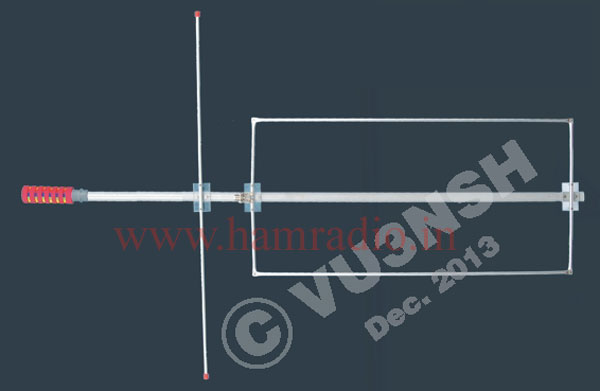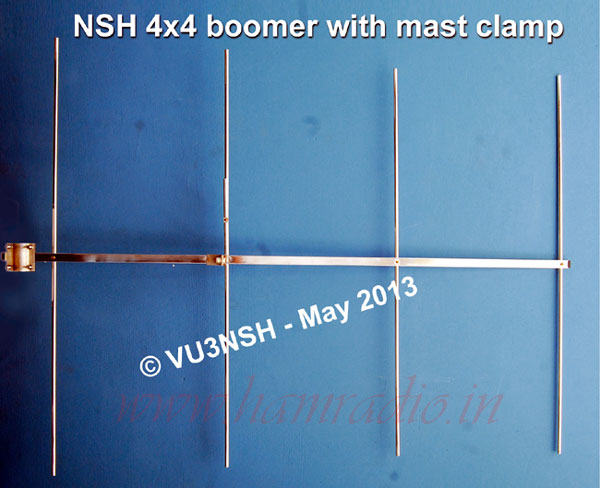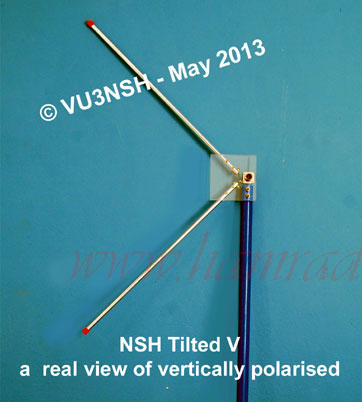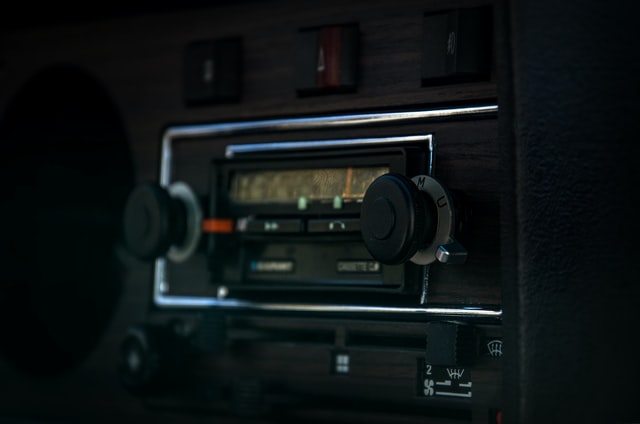VHF 2m Antenna
Generally Hams are using different antennas to get better signals in VHF. They select the popular types from a quarter lambda to a beam yagi) or stacked verticals. Many experienced hams are designing and homebrewing their antennae for their own purposes. Some people are copying the same and begin to make the antennae without reading or understanding the subject properly (PLAGARISM). Moreover they say that it is not working or it is not producing proper gain.
Every entennae have its own chareteristics like gain, take of angle, matching, bandwidth etc. In this article, I am going to explain a 'Tilted-V' for our VHF 2 m band. This design will produce a perfect omni pattern. This antenna is very simple to construct for new commers. These type of V-design is explained by Dean A. Scott in 'Inv Vee Antenna 4ULs REV'. For AIR BAND, The V-Dipole LPDA by W4RNL, hamuniverse.com - 'Cheap and easy to build 2m Antennas' by DON N4UJW and in RSGB, VHF/UHF manual, pages 837-838, it is also given.

The gain of the antenna is like a dipole and typically it is 2.15 dB (i.e., 1.7 times). It needs bit more Tx power for hooking a very long distant sation. When I tested I got the SWR 1:1 in 144 to 146 MHz (Refer the graph given). I have done the mirror polishing to this aluminium element tubes for aoviding the skin effect and associated power loss. The two element length are 47.3 cm for 144-146 MHz frequency.





I observed that this antenna is much useful in moderate height, gracile, simple to construct and very low cost. It will catch all the signals from mine to mount. I have worked with my regular local stations around 10 kms with this low height with low power and I got a report of 5 9 plus. In short, this antenna will graze any angle, any direction and hook the station like a grapnel. Due to its wide angle receiving capacity it is very useful for city dwellers they are having the space limitation and they can fix it at balcony, window, sunshades etc. Moreover while lightning conditions they can use it as an indoor transmitting antenna. Do not touch the antenna while tranmitting. See the radiation photos which is taken by placing the 4 feet fused flouracent tube near to antenna while transmitting and it will light with 80 % of its brightness. I have given this demo of RF radiation to a number of my friends like VU2EPT, VU2DX, VU2UJE, VU3SYG, SWLs Murali Master, Rejeesh etc. and they are very much excited. So homebrew it and enjoy and know more about this. Radiation pattern of this antenna is llike crumbled DOUGHNUT (DONUT), see Torus in Wikipedia.




